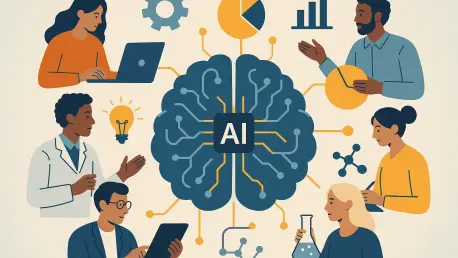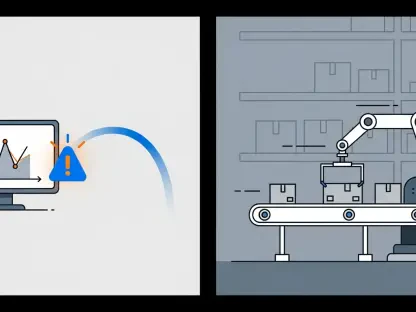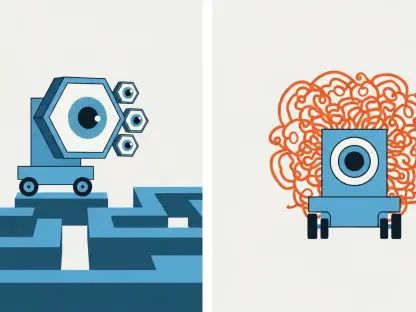Artificial intelligence has profoundly reshaped various industries with its ability to integrate seamlessly into diverse disciplines. As we stand at a juncture of unprecedented technological growth, the emphasis on interdisciplinary AI solutions has never been more critical. This technology has transcended traditional boundaries, allowing for a fusion of fields such as engineering, data science, policy, and economics. Such an integration is indispensable for tackling global challenges that demand cross-disciplinary insights.
AI’s Core Components and Their Role
Artificial Intelligence, at its core, embodies an array of components and principles that enable its flexible application across numerous fields. Machine learning algorithms, a vital part of AI, facilitate self-learning from vast pools of data. These algorithms detect patterns and enhance predictive accuracy, thus proving indispensable for industries focusing on automation and optimization. Data integration is another pivotal feature, where data from disparate sources is amalgamated to provide comprehensive insights and inform decision-making processes.
Data management techniques ensure that the extracted information is both accessible and actionable. By synthesizing data from various sources, AI systems bolster the capability of disciplines to understand and respond to complex scenarios. This integration is crucial across sectors, where isolated data points fail to paint a complete picture without a unified analytical approach.
Progress and Innovations in Interdisciplinary AI
Recent years have witnessed a wave of innovations and emerging trends in interdisciplinary AI solutions. The shift in consumer preferences and industry demands has pushed AI technology toward new heights. Fields such as healthcare, transportation, and environmental science have begun to leverage AI’s predictive power and automation potentials. The adaptation of AI in these fields is propelling industries forward, allowing them to meet modern demands with unprecedented efficiency.
Emerging technological trends have also influenced AI’s trajectory, with advancements in natural language processing and computer vision changing how AI interacts with human inputs. These innovations have led to more user-friendly AI models, accommodating complex human feedback while providing actionable insights across industries.
Real-World Applications and Use Cases
Interdisciplinary AI has gained recognition for its vast array of applications across different sectors. Healthcare, for instance, employs AI for predictive diagnostics and personalized medicine, demonstrating its capability to address both clinical and operational challenges. Transportation sectors leverage AI for autonomous vehicle technologies, optimizing routes and fuel consumption for efficiency and safety.
Unique use cases illustrate the versatility of interdisciplinary AI solutions. In environmental science, AI models analyze climate data to predict weather patterns, aiding in disaster preparedness and resource management. These instances underscore AI’s potential to offer solutions that are not only innovative but also impactful on a societal level.
Overcoming Adoption Challenges
The journey toward widespread AI adoption is not without hurdles. Technical challenges, including algorithmic biases and data security issues, pose significant barriers. Furthermore, regulatory concerns concerning AI ethics and implementation have emerged, requiring thoughtful navigation. Market obstacles, such as the cost of technology and resistance to change, further impede progress.
Efforts to mitigate these challenges are underway, emphasizing transparency, ethical AI standards, and collaborative efforts across sectors. Institutions are actively developing frameworks to address these barriers, ensuring that AI technology can be harnessed responsibly and expansively.
Future Prospects of Interdisciplinary AI
Looking ahead, interdisciplinary AI is anticipated to achieve groundbreaking milestones. Potential breakthroughs include AI’s deeper integration into everyday life and heightened precision in problem-solving across domains. The long-term impact of these solutions on industries and society is expected to drive innovation and efficiency, tackling global challenges with newfound agility.
The impact of interdisciplinary solutions will likely reshape industries, promoting collaboration that prioritizes inclusivity and sustained growth. The future holds promise for AI as it continues to redefine the parameters of what technology can achieve, advocating for a more interconnected and smarter world.
Final Thoughts
In conclusion, interdisciplinary AI has evolved into a transformative force within the technological landscape. The blend of AI features and components facilitates diverse applications, driving industries toward innovative solutions while navigating current challenges effectively. Past advancements have set the stage for future growth, ensuring interdisciplinary AI solutions contribute positively to society’s advancement and problem-solving endeavors across diverse sectors.









